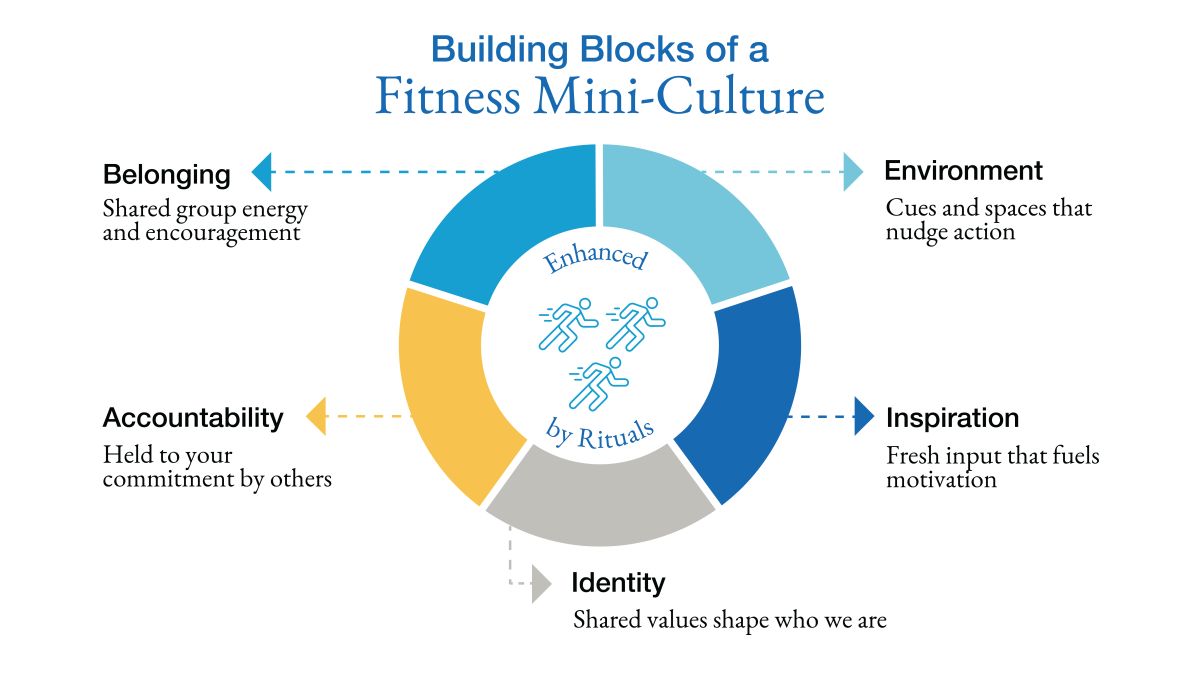Exercising with Friends or in a Group Can Help the Habit Stick
Early in my career, I took over a small cardiac rehabilitation program at Cedars-Sinai Medical Center in Los Angeles. At the time, space was limited and sessions were short. Determined to improve things, I secured more room and reorganized the schedule so patients could enjoy longer sessions. I thought they would be pleased.
Instead, the next morning I stepped off the elevator and was surrounded by an angry crowd of patients. Voices were raised, hands waved, frustration everywhere. I quickly learned why: in my scheduling shuffle, I had intermixed patients from different time slots.
More Than a Schedule Change
To me, it seemed like a small change. But to them, it was everything. Each time slot had become its own community. Patients looked out for one another, checked in if someone missed a session, and drew strength from exercising side by side.
What struck me even more was that the rehab nurses hadn’t realized this culture existed. It had formed naturally, unnoticed by staff, yet it was strong enough that my schedule changes sparked outrage.
That moment left a deep impression on me. It was my first lesson in the extraordinary power of social support—and how even small groups can form mini-cultures that make healthy behaviors not only easier, but more meaningful.
Beyond Resolutions
Every January 1st, exercise appears at the top of people’s resolution lists: This year I’ll get in shape. This year I’ll be consistent. Gyms even have a name for it—the “New Year’s rush.” But just as quickly, the crowds thin. By February, many of those same memberships go unused.
Why does this happen? The reasons vary:
- Busy schedules—daily demands crowd out workouts that aren’t yet automatic.
- Waning motivation—initial enthusiasm fades once the novelty wears off.
- Lack of quick results—progress feels slow, and discouragement sets in.
- Going it alone—without accountability or encouragement, it’s easy to skip.
The bottom line is this: most people don’t struggle because they lack knowledge or good intentions. They struggle because they lack support.
And that’s where creating a mini-culture of fitness makes all the difference. Instead of relying on willpower alone, you surround yourself with people, routines, and shared rituals that make exercise a natural part of life.
Building Your Own Mini-Culture of Fitness

So how do you actually do it? The key is to move beyond willpower and design a small ecosystem that keeps exercise front and center in your life. Here are five powerful tools:
1. Belonging
Community is one of the strongest drivers of lasting habits. Joining a group, taking classes, or exercising with friends ties you to a culture that normalizes activity. Even a simple WhatsApp group adds accountability and encouragement. When you belong, showing up becomes the default.
2. Support and Accountability
Direct accountability from a buddy, trainer, or family member makes it harder to skip. Few things build consistency like knowing someone else is counting on you. Supportive partners not only keep you honest but also help you push through on low-motivation days.
3. Identity
When exercise becomes part of who you are, it stops feeling like a chore. Finding like-minded people reinforces that identity, turning “working out” into belonging to a culture that values movement. Shared routines, apps, or even the gear you wear all signal, “this is who we are.”
4. Cues and Environment
Our surroundings shape behavior more than we realize. Simple cues—a gym bag by the door, a calendar block, or space for a yoga mat or weights—nudge you to start and reinforce that activity is part of daily life.
5. Continual Learning and Inspiration
Exposure to exercise-related content keeps the idea fresh. Podcasts, newsletters, and videos provide knowledge and motivation, while stories from other active people remind you that progress is possible and setbacks are normal.
Why Exercise Is Especially Suited to Mini-Cultures
Exercise has a unique advantage: it naturally thrives in groups. Shared effort creates instant solidarity—‘we’re all in this together’—and builds identity and community.
That’s why a mini-culture of exercise can be so powerful: it turns a solitary habit into a shared pursuit.
The Larger Lesson
I’ll never forget those cardiac rehab patients who rallied so fiercely around each other. They taught me that exercise is never just about muscles, heart rate, or endurance—it’s about people.
When we move together, we gain more than fitness. We gain connection, accountability, and a sense of belonging that makes healthy habits stick.
That’s the power of a mini-culture: it turns exercise from a fragile resolution into a lasting way of life.
A Challenge for You
- Recruit one ally. Find a friend, colleague, or family member who wants to be more active and invite them to join you.
- Anchor a ritual. Choose a time, place, or simple pre-exercise routine that signals “it’s time to move.”
- Mark your first milestone. Whether it’s three workouts, one week, or your first class, celebrate it.
When you build a culture around exercise, change gets ignited. Why not ignite yours this week?



